Secondary & Senior Secondary
Secondary & Senior Secondary
The Secondary & Senior Secondary curriculum is designed to develop skills in creative thinking, inquiry based, rigourous research and problem solving. At this stage, the pace of academic demand is accelerated and students are gradually prepared to forge ahead. Students gain a strong foundation and develop into holistic beings. During these years, the smooth transition from childhood to adolescence is facilitated by a comprehensive, value-added education.
Academic challenge becomes the focus as the students start preparing for board exams. Our mission is to equip students with comprehensive and conceptual knowledge in each subjects along with social development.
Academic challenge becomes the focus as the students start preparing for board exams. Our mission is to equip students with comprehensive and conceptual knowledge in each subjects along with social development.
Field Trips, Sauhardrika, Cross-curriculum, Assessments, Competitions
Going on field trips is an interesting means of making connections with real life experiences. Students undertake trips to various factories, fairs, botanical gardens and out locations. This way the students are able to connect their classroom learning with expereince based learning. New refreshing perspectives help them develop their thinking and communication skills. They get more confident and curious about the various walks of life. Research based skill is honed to the fullest when they gather information on various issues like scarce resources, marine life, musical instruments, habitats and global warming, to name a few.
Sauhardrika, Our Founders day celebration, is a week long school initiative and every class puts up a theme based stall with interactive games, presentations on charts and videos. Many stalls use the performing art and skits to bring home the message. There is a spirit of personal and shared responsibility in every aspect of this endeavour. The whole school works towards this event in a collaborative atmosphere. Real life issues and problems, when taken out of the classroom context become all the more enriching.
Our assessment format includes project presentations and group discussions along with the other CBSE prescribed assessments (formative and summative assessments). Internal assessment are conducted on a regular basis. Prarambhika uses ‘gap analysis’ method to ascertain students who needs ‘extra’ attention and use Google Classroom and Khan Academy effectively to talior assistance to such students.
Our children are encouraged to participate in National Level Competitions in all possible fields like Science National Congress, Olympiad, Behes, Debate, Sports and more to ensure that our children are at par with peers across the country.
Physical activities in the Primary, Middle & Senior School
Our Children eagerly look forward to Badminton, Kho-Kho, Kabaddi, Skipping, Yoga, Athletics and fun games. Indoor activities include Board games and Carrom.
Further Information

- Behind Karlo Motors, Boring Road, Patna
- +91-85389-05711
- +91-81027-87797
- info@prarambhika.com


